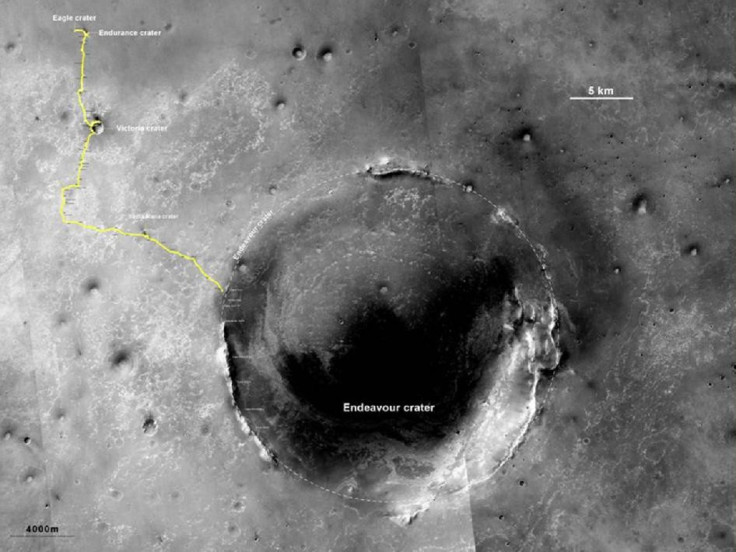NASA's Surviving Rover On Mars to Reach 'Spirit Point' at Endeavour Crater

NASA's Mars Exploration Rover Opportunity is expected to reach the rim of Endeavour crater on Mars, where its rover twin Spirit finished its 6-year-long mission in May.
Driving commands sent up to Opportunity directed the six-wheel rover to make the final push toward Endeavour crater, a 14-mile-wide depression near the Martian equator that likely could be its final destination, the Associated Press reports.
The finish line for Opportunity, which will reach the crater's edge on Tuesday at earliest, is a site on the rim of Endeavour named "Spirit Point," named by the rover team members in honor of the rover's lost twin.
Twin rovers Opportunity and Spirit completed their three-month prime missions on Mars in April 2004. Both rovers went on to extended missions, making important discoveries about the environment on ancient Mars, which suggest possibilities for microbial life.
"Spirit achieved far more than we ever could have hoped when we designed her," said Steve Squyres of Cornell University, Ithaca, N.Y., principal investigator for the rovers. "This name will be a reminder that we need to keep pushing as hard as we can to make new discoveries with Opportunity. The exploration of Spirit Point is the next major goal for us to strive for."
The milestone triggers the excitement for an adventure back into a mission that amazed the world with colorful portraits of the landscape and the unmistakable geologic discoveries of a warm and wetter past.
Endeavour crater is arguably the most important science target since landing, said Project manager John Callas of the NASA Jet Propulsion Laboratory.
Opportunity will spend several months imaging the rim and interior of the crater, but is not planned to drive across the crater because it could get stuck, said Callas.
Instead, it will traverse south along the rim in search of clay minerals, which scientists suggest forms under wet conditions.
While orbiting spacecraft has extensively studied these clay minerals, Opportunity will mark the first to examine them directly on the ground.
"We will likely spend years at this location," Callas said. "What a destination. It's not just one spot. There's kilometers of interesting geology to explore."
© Copyright IBTimes 2025. All rights reserved.



















